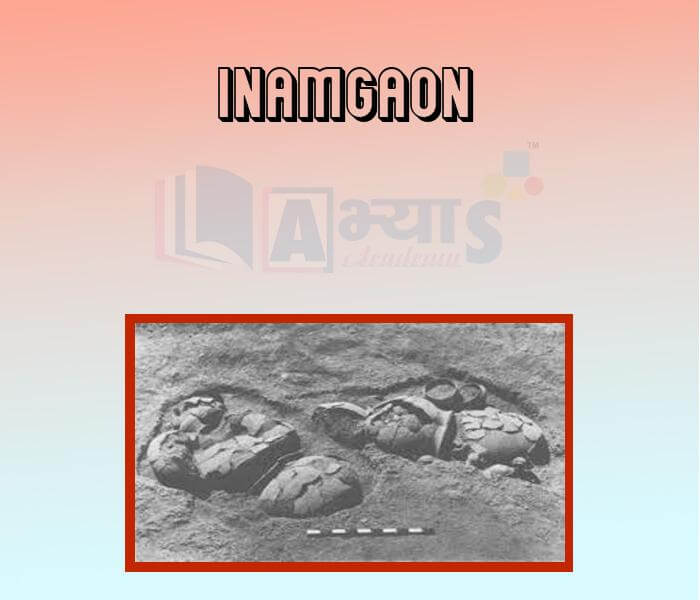Inamgaon

Inamgaon
CHALCOLITHIC SETTLEMENTS IN THE WEST OF INDIA
Inamgaon,on the bank of the river Ghod in Maharashtra,is one of the largest Chalcolithic settlements in India.The Chalcolithic phase of this settlements lasted for around 900 years,from 1600 BCE tO 700 BCE,during which the people here used both stone and copper .The people of Inamgon were mainly farmers.
Archaeologist have found the remains of the least 134 mud houses at Inamgoan.The houses are rectangular structure measuring 5x3 m. The walls of the houses were probably built of mud and branches of trees, while the roofs were thatched with grass.The richer farmer lived in the center of the settlement.One of the biggest houses here had as many as five rooms.
A few tools and ornaments made out of copper have been found at Inamgaon. Stone tools consisted of blades and microliths.
On the basis of the plants seeds found at the site, we know that the people of Inamgaon grew barely, wheat, peas,gram and beans.They also cultivated rice ,jowar and ragi .They domesticated animals like cattle,sheep ,goats,dogs and pigs,as can be seen from the animals bones found here. The discovery of Fish bones and fish -hooks attest to the practice of fishing here.
Several terracotta figurines have been found at Inamgaon of which the most common animal figure is that of the bull.Some figurines,thought to be of mother goddesses,have also been found. The pottery of the people was of quite a high standard .It was wheel -made and fired .Pottery Kilns have been found at Inamgoan.The pottery has red background with simple geometric designs painted on it in black.
A large number of Human burial sites have been found at Inamgaon . clay pots containing food and warter were placed along with the body .The people worshipped both gods and goddesses.
Students / Parents Reviews [10]
Abhyas is a complete education Institute. Here extreme care is taken by teacher with the help of regular exam. Extra classes also conducted by the institute, if the student is weak.

Om Umang
10thIt has a great methodology. Students here can get analysis to their test quickly.We can learn easily through PPTs and the testing methods are good. We know that where we have to practice

Barkha Arora
10thBeing a parent, I saw my daughter improvement in her studies by seeing a good result in all day to day compititive exam TMO, NSO, IEO etc and as well as studies. I have got a fruitful result from my daughter.

Prisha Gupta
8thMy experience was very good with Abhyas academy. I am studying here from 6th class and I am satisfied by its results in my life. I improved a lot here ahead of school syllabus.

Ayan Ghosh
8thAbout Abhyas metholodology the teachers are very nice and hardworking toward students.The Centre Head Mrs Anu Sethi is also a brilliant teacher.Abhyas has taught me how to overcome problems and has always taken my doubts and suppoeted me.

Shreya Shrivastava
8thI have spent a wonderful time in Abhyas academy. It has made my reasoning more apt, English more stronger and Maths an interesting subject for me. It has given me a habbit of self studying

Yatharthi Sharma
10thMy experience with Abhyas academy is very good. I did not think that my every subject coming here will be so strong. The main thing is that the online tests had made me learn here more things.

Hiya Gupta
8thMy experience with Abhyas is very good. I have learnt many things here like vedic maths and reasoning also. Teachers here first take our doubts and then there are assignments to verify our weak points.

Shivam Rana
7thAbhyas Methodology is very good. It is based on according to student and each child manages accordingly to its properly. Methodology has improved the abilities of students to shine them in future.

Manish Kumar
10thOne of the best institutes to develope a child interest in studies.Provides SST and English knowledge also unlike other institutes. Teachers are co operative and friendly online tests andPPT develope practical knowledge also.








